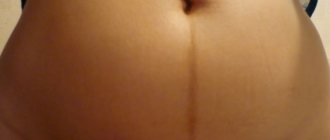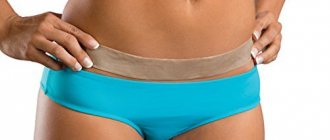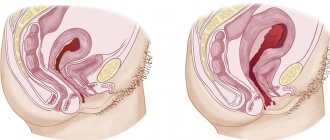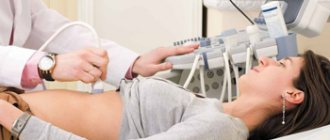Many expectant and established mothers, especially those who have undergone a period of adaptation after a cesarean section (CS), probably know that in this case it is more difficult to establish lactation than after a natural birth.
It is important to understand the potential difficulties and ways to resolve them, as well as to follow the basic rules of breastfeeding after the artificial extraction of a newborn through an incision in the woman’s uterus.
- Why is it necessary to establish breastfeeding after a caesarean section?
- Painkillers and antibiotics during breastfeeding
- How to develop breasts after cesarean and what to do with milk stagnation
- Possible problems after surgery First application
- Staying in the intensive care unit
- Insufficient milk production, advisability of supplementary feeding
- The problem of retraining the baby
- Lethargy and drowsiness of the baby
Why is it necessary to establish breastfeeding after a caesarean section?
Mother's milk is the healthiest food for the future full development of the baby. Considering the fact that labor and the onset of the lactation process are closely related, the problem of feeding a baby born by caesarean section is of particular importance.
Important! If a child is born prematurely, stimulation of lactation, as well as expressing milk, must be done as soon as possible after a cesarean section.
Lactation begins even before the birth of the child, since morphine-like substances endorphins, released to relieve labor pain during contractions and the physiological process itself, stimulate increased production (secretion) of prolactin, the “milk” hormone.
The hormone oxytocin is responsible for the safe contractility of the uterus during labor and the functioning of special cells in the mammary glands (the “milk ejection” reflex during stimulating baby sucking on the mother’s breast).
The release of oxytocin in mothers who have given birth to cubs physiologically is more rhythmic and active (in the form of frequent pulsation) than in “nulliparous women”. In addition, the nature of the hormone's release significantly affects the duration of breastfeeding: the higher the level of oxytocin, the higher the degree of prolactin in the woman's blood.
During natural labor, milk comes almost instantly, and after surgery during childbirth, the period of milk “stay” can increase to 3–7 days.
This figure is directly dependent on:
- the number and types of medications used during childbirth;
- the rate of renewal of the mother’s body;
- correct nipple latching;
- frequency and duration of breastfeeding after the birth of the baby.
In addition to surgical prerequisites (poor health after anesthesia, fatigue), the time interval between birth and the first attachment of the child to the mother’s breast may increase compared to the natural process, then the reason may be the separation of mother and baby after the CS.
Please note: how to care for and treat stitches after childbirth.
Children born through CS surgery are slightly different from those born naturally - for example, they have a lower percentage of glucose in the blood, different functionality of the respiratory and circulatory systems, as well as immunity; body temperature in the first hours of life is lower than usual.
That is why children removed by incision of the uterus need more meticulous care, including adequate nutrition with mother's milk.
When will milk appear?
Very often, breastfeeding after a cesarean section is accompanied by a problem when the mother has no milk after 3-4 days. In most cases it depends on hormones.
Oxytocin is a hormone that during labor is responsible not only for contractions, but also promotes the onset of lactation and rapid milk production. All this was originally laid down by nature. During surgery, oxytocin is not produced and the woman’s body does not immediately notice the birth of the child. As a result, the process of establishing lactation is delayed. Therefore, for many mothers it can begin only on days 5-9. Another thing is a cesarean after the onset of labor. In this case, milk comes in 3-4 days.
Painkillers and antibiotics during breastfeeding
Most guidelines for the use of antibacterial and analgesic medications indicate that their use during lactation is not recommended. There is a small list of more or less studied remedies that can be used during breastfeeding.
Did you know? On the first day, a couple or three drops of breast milk per feeding is enough to maintain the viability of a newborn baby.
Most of them pass into mother’s milk to one degree or another, therefore, in order not to harm your baby, you need to use them very carefully and only after consulting a doctor, taking into account your individual properties, as well as the characteristics of the child’s development.
Video: What medications can you take while breastfeeding?
How to develop breasts after cesarean and what to do with milk stagnation
The pain that accompanies the process of recovery of the mother's body after surgery blocks the outflow of milk from the breast due to an impairment in the rate of oxytocin production.
Important! In case of stagnation of milk, massage will come to the rescue - not only of the breast, but also of the collar area, back and shoulder girdle before feeding or expressing milk.
To develop the mammary gland and restore the lactation process, it is necessary to carry out actions to stimulate the flow of milk, first of all - a gentle lymphatic drainage massage in the supine position (especially if the breasts are hard and there is stagnation of milk): with gentle movements of the fingertips (do not press too hard, because the layer skin, protecting the mammary gland from external influences, is only 2 mm), press on the breast areola for a few seconds, and then, gently touching with all fingers, carefully move upward from the nipple. After this, you have the opportunity to express some milk.
Massage the reproductive gland often and express milk (in whatever quantity). If you have taken all the necessary steps to independently establish breastfeeding in the postoperative period, but milk does not appear, or its quantity is not enough to fully nourish the baby, you should seek professional help from breastfeeding specialists and pediatricians.
Read more about menstruation after cesarean section while breastfeeding.
How to improve lactation?
In addition to stimulating the nipples by expressing colostrum, a young mother should adhere to a few more recommendations for promoting lactation:
- if supplementary feeding is necessary, then it should be done with a spoon, and not from a bottle. The amount of supplementary feeding should not exceed 30 ml at a time;
- The child should be at the breast at his own request, especially if he is premature. There is no need to limit it in time;
- feeding should be done on demand;
- To stimulate milk production, you need to take more fluid. But here there must be a measure - a large amount of milk can contribute to the formation of congestion in the breast, which will have to be combated by constant pumping, which again can provoke increased production;
- For feeding, you need to choose positions that are comfortable for both mother and baby.
Caesarean section is not an obstacle to breastfeeding; only 25% of women have problems with it. The majority of young mothers successfully feed their babies from the second or third day after birth. Moreover, many of them successfully complete “these procedures” only after 1-1.5 years. So in this case, a lot depends on the desire to feed your child breast milk.
Possible problems after surgery
It is necessary to take into account in advance the most common difficulties that arise for those who have undergone CS surgery.
First application
With local anesthesia during cesarean delivery, the baby is given to the mother immediately after the operation; in the case of general anesthesia, the newborn is brought in after 2-3 hours, when the woman in labor has more or less come to her senses.
Planned surgical interventions during labor are usually prescribed for the first half of the day; in an emergency, a caesarean section can be performed at night, as a result of which the baby is put to the breast much later.
A significant condition during the establishment of breastfeeding after a CS is the earlier attachment of the child to the mother’s breast, which, in the opinion of many, seems impossible and impractical. However, practice shows that latching the baby within 6 hours after surgery has a beneficial effect on the mother’s lactation process.
To successfully implement earlier attachment, you should make sure that a person close to you is present with you during the birth process, who will assist with the initial care of the child.
Did you know? Silicone breasts do not interfere with the ability to breastfeed a newborn. The main thing is that during plastic surgery for breast augmentation the areola and milk ducts are not affected.
When a baby is born naturally, it is applied to the mother’s breast directly in the delivery room, due to which the woman’s milk production is naturally stimulated with immediate tactile contact. In the case of a caesarean section, such an attachment is physically impossible, since in most cases the mother is under anesthesia.
Staying in the intensive care unit
The first day after a cesarean section, the woman is in the intensive care unit, where the baby will be brought for breastfeeding. Make sure that the baby is not away from you for a minute of the allotted time; apply it evenly to both nipples.
This should be done correctly (which is discussed in more detail below), otherwise the newborn may injure the breasts, even to the point of cracks and blood appearing on the nipples. For preventive purposes, it is recommended to lubricate nipples with a special ointment that is safe for children.
On the second day, mother and baby are transferred to the ward of the postpartum department, where they remain until discharge (usually the next 4-5 days).
The mother’s well-being after the operation is such that she is simply not able to put the baby to the breast in various positions, but here the position of the mother on her back or side, and the baby on the mother’s stomach, or next to her, is quite suitable (grasping the nipple in this position occurs from above or side).
Video: How to establish breastfeeding after a caesarean section
Insufficient milk production, advisability of supplementary feeding
Due to the postoperative well-being of the mother (pain in the scar area) and the lack of hormonal changes in her body during artificial (superficial) labor during the surgical procedure, as well as on the first day after cesarean section, the woman is provided with infusion therapeutic support, which can provoke breast swelling and insufficient milk production.
On the first day after birth, doctors recommend developing the breasts and expressing milk independently for 15 minutes from each breast every three hours, and, if possible, at least once a night. It is worth considering that there may not be a large amount of milk; the volume may be limited to just a few drops of colostrum.
As for supplementary feeding, unlike natural breastfeeding with unlimited frequency and duration, it should be done strictly once every 4–6 hours in the first couple of days, gradually increasing the time period in the coming days.
It is important that the supplementary feeding process does not in any way resemble breastfeeding.
The main purpose of supplementary feeding is temporary additional nutrition for the child: by gradually increasing the time intervals between supplementary feeding, you stimulate the natural production of milk in the amount you need - such that you will be discharged from the maternity hospital only for breastfeeding.
The problem of retraining the baby
Due to the fact that for some time after the CS the mother’s milk “does not come in”, and the baby still needs to be fed, feeding the baby with bottle formula seems to be the solution. And this contributes to the incorrect use of the sucking reflex and the subsequent rather difficult weaning of the child from the bottle, in addition to the fact that the same reflex manifests itself earlier in those born naturally than in operating rooms.
Try to avoid bottle feeding: as practice shows, when you are under the influence of anesthesia, the medical staff will most likely give him a bottle of glucose or formula to stop the baby from screaming.
Important! If the baby is fed not from a bottle, but with the help of objects that do not involve the sucking process, it will be much easier for the mother to teach him how to properly latch onto the breast during natural feeding.
However, if you have the opportunity, do not allow this to happen by asking someone close to you to be present at the birth, because the very first food for a newborn should be mother’s milk. Skin-to-skin contact can be established between a baby not only with its mother, but also with its father or grandmother. The baby will calm down for a while until you wake up from the anesthesia.
But still, if this happens, and the child is bottle-fed after being discharged from the hospital, this does not mean that it is too late to retrain him, so put him to the breast at every opportunity, carry the child in your arms as often as possible (for example, in a sling ) with the possibility of skin-to-skin contact.
The system of breastfeeding in this case will contribute to the stimulation of the mother’s breasts, as well as a faster “arrival” of milk and a complete transition from bottle to breast, natural feeding.
Lethargy and drowsiness of the baby
One of the most common problems faced by nulliparous women is lethargy and drowsiness of the baby, which occurs due to the fact that during the CS period he could be exposed to anesthetics and painkillers. If the baby does not show sufficient interest even after latching on to the breast several times, there is nothing wrong with that.
Don't give up, persist and be patient. Let your baby sleep on your chest more often, feel the smell and warmth of your skin, and then soon the manifestation of his natural instincts and reflexes will not be long in coming. In addition, it is important to do this not so much according to a schedule, but at those moments when the child is most calm, but does not want to sleep yet.
Important! A child who has had enough to eat either moves away from the breast or falls asleep calmly in the process. If the baby is hungry, then he constantly cries without interrupting sucking; He can also fall asleep, but from fatigue.
If the baby is sleeping, it is not necessary to wake him up in order to feed him. He will get enough sleep and then ask to eat. It is worth waking up the baby for feeding when he sleeps more than two hours during the day, and more than four at night.
Not enough milk - what to do?
If a young mother asked this question in the first days, then there is no need to worry here. At this time, there is no milk at all - everything that is released from the breast is colostrum. This is a very nutritious liquid, a few drops of which are enough for a child to eat.
To avoid problems with lactation in the future, it is necessary to express this colostrum, even drop by drop. The process of pumping gives a signal to the body about the need for milk and is a kind of stimulator for its production. You can start performing these procedures on the second day; on the first day you need to rest and gain strength.
If problems with lactation began 2-3 months after birth, then a cesarean section has nothing to do with this. Perhaps this is the so-called lactation crisis, which occurs at 2, 4, 7 and 8 months. In this case, a variety of lactation formulas, proper nutrition, increased fluid intake and the desire to continue breastfeeding will help.
How to properly breastfeed your baby after a caesarean section
As for the feeding position, after the CS the baby is placed on the mother’s chest, which is in a lying position. A woman needs the help of loved ones or medical staff who will bring the baby, adjust the pillows, and help attach him to the breast correctly. Only after a few days can a mother who gave birth via CS begin to think about changing her feeding position.
Practice shows that most often operated women are placed in a “sitting” position on a low stool, or in a “Turkish” position due to the absence of pain in the perineum. But you must definitely try to ensure that the weight of the child does not put pressure on the postoperative suture.
After surgery, some mothers use chairs with low armrests in the “cradle” position, while others find it more comfortable to feed “under the arm” when the baby’s head lies on the crook of the elbow. The standard feeding position is lying on your side, with pillows under your back and head.
In any case, whatever position you choose, it should not cause you discomfort during long-term feeding, and during its use it should be easy for you to monitor the correct latching of the baby.
Doctors' advice
And finally, useful recommendations from experts:
- If you do not have indications for CS surgery (for example, a discrepancy between the size of the baby and the pelvis of the expectant mother, placenta previa, or transverse position of the fetus, other symptoms), overcome the fear of labor pain, since the process of establishing breastfeeding after surgery may be quite difficult for you. you and not very useful for the child.
- Make sure that after birth the baby is in the same room with you: this will speed up the process of establishing breastfeeding.
- Even despite feeling unwell and fear of pain during breastfeeding, try to keep your child near you as often as possible.
- Drinking warm liquid before breastfeeding or at the very beginning improves the production of oxytocin and the outflow of milk from the glands.
We recommend reading whether it is possible to give birth without pain.
Thus, according to information from breastfeeding specialists, as well as childbirth preparation instructors, the milk of most mothers who have had a cesarean section “comes up” much later than that of those who gave birth naturally. For this reason, early latching of children to the breast must be done frequently (almost every hour), as well as stimulating massage of the breast.








